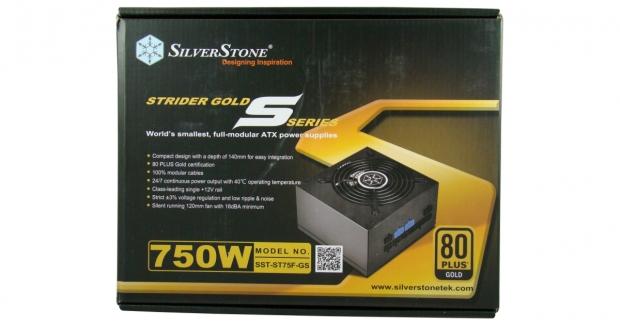The Bottom Line
Introduction and Specifications, Availability, & Pricing
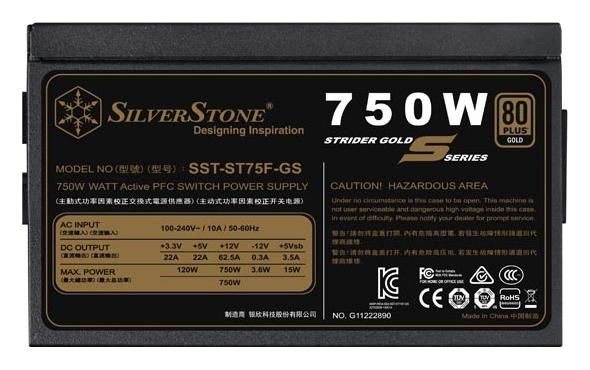
Earlier this year, we looked at the SilverStone ST75F-GS power supply. It proved to be a good unit, but it just didn't have anything that really made it stand out. The unit provided decent power at a decent price and that was about it. SilverStone obviously knew that the ST75F-GS PSU just needed a bit more and that's why they've already revamped the unit and brought the ST75F-GS V2 to market.
The Strider Gold S Series ST75F-GS V2 is an entirely new platform despite sharing the same series name as the original. It has many of the same features as the original, but has a smaller footprint and better build quality. The output specifications for the unit are also slightly different, which is to be expected since the unit is of a different platform.
We'll go over all of the differences one at a time as we go through the review, so let's just get started with the paper specs.
Specifications, Availability, & Pricing
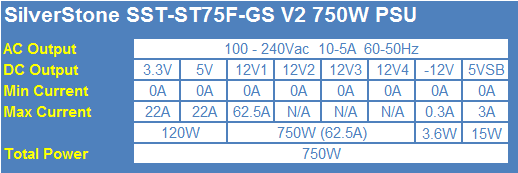
The SilverStone ST75F-GS V2 features a single 12V rail rated for 62.5A or 750W. This is a .5A gain over the original. Both the 3.3V and 5V rails are rated for 22A each with a combined maximum output of 120W, which is down 30W from what we previously saw with the V1 unit. The 5VSB rail is rated for 3.0A or 15W, which again is down from the first iteration of the unit. Maximum combined output for the ST75F-GS V2 is 750W.
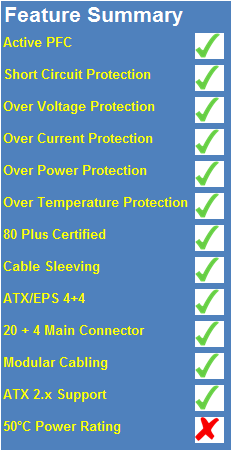
Nothing changes for the ST75F-GS V2 when comparing features to the original. The ST75F-GS V2 power supply features a full suite of protections including SCP, OVP, OCP, OPP, and OTP. The ST75F-GS V2 is rated for 80 PLUS Gold efficiency. The power supply is fully modular and all cables are of the flat ribbon type. Finally, the ST75F-GS V2 series is not rated for 100% continuous output at 50C, but is at 40C.
SilverStone has an MSRP of $134.99. Again, this places the unit right in the middle of the 750W crowd. This doesn't give it much of an edge against the competition, as it still doesn't have any special features or specifications that make it stand out from everything else. SilverStone stands behind the ST75F-GS V2 with a three-year warranty.
Package & Inside the Box
Package
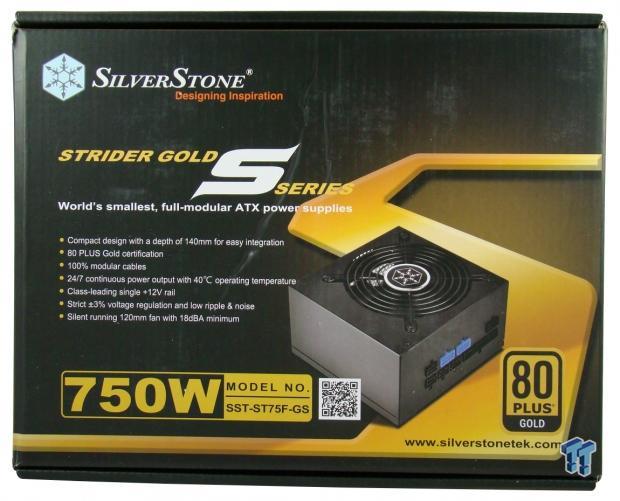
Minus some very minor discrepancies in location and text color, the packaging for the ST75F-GS V2 is the same as the original.
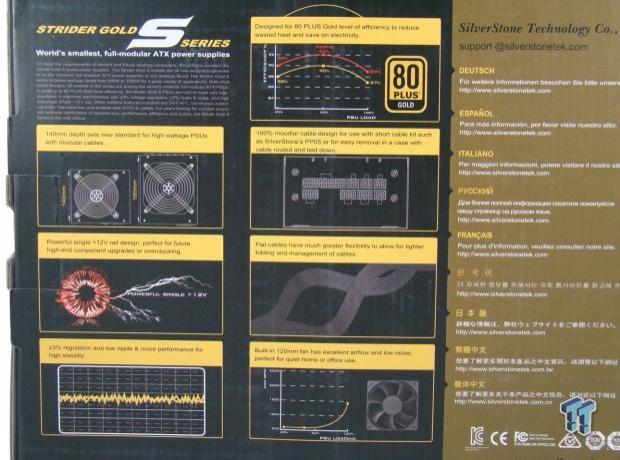
The back is filled with pictures talking about output quality, efficiency, size, cables, and more.
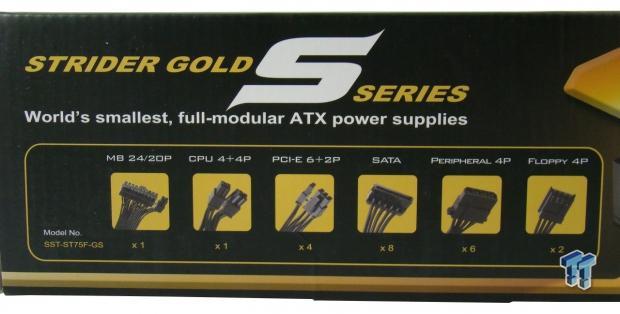
A list of connectors available are present on this side of the box.
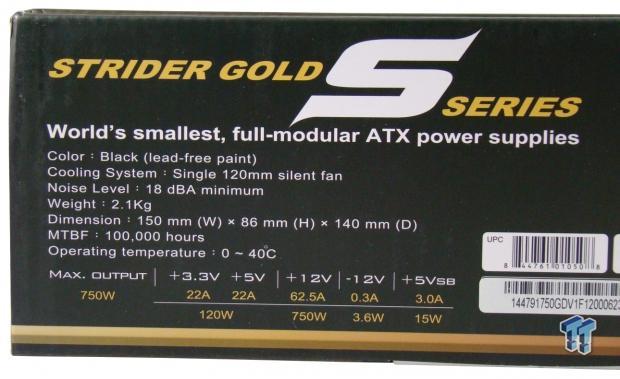
The other side gives us the I/O specifications.
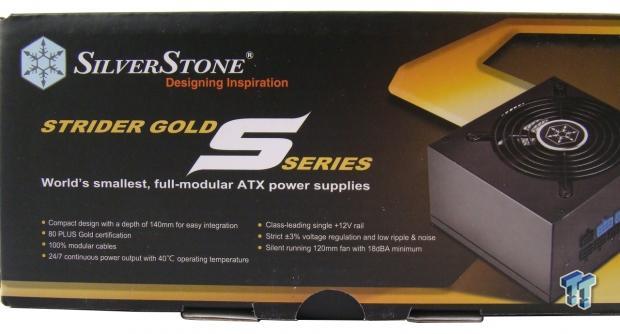
Finally, we have the last side which is simply a reiteration of the front of the box.
Inside the Box
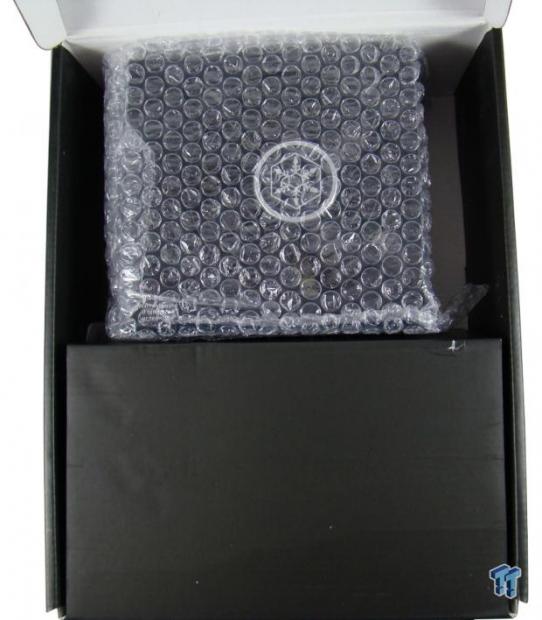
The unit is still protected by a single layer of bubble wrap, but this time it is the type with smaller air pockets. It still gets the job done, but is certainly far from the best that we've seen.
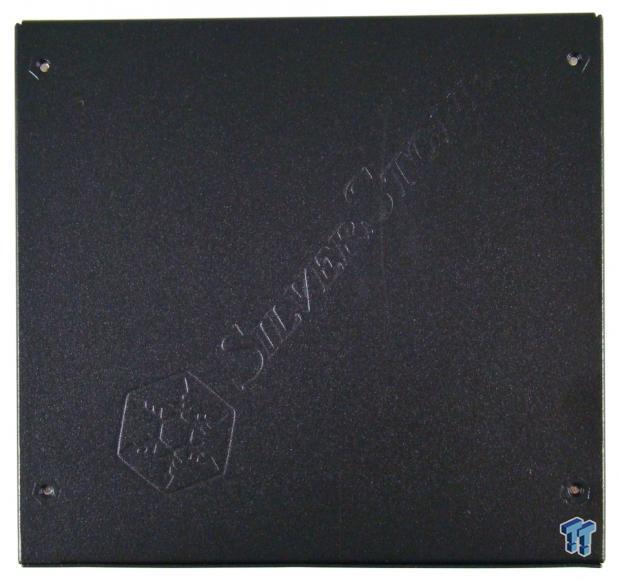
As always, the top of the unit has the SilverStone logo stamped in it. Here, we can also see the semi-gloss black finish on the ST75F-GS V2.
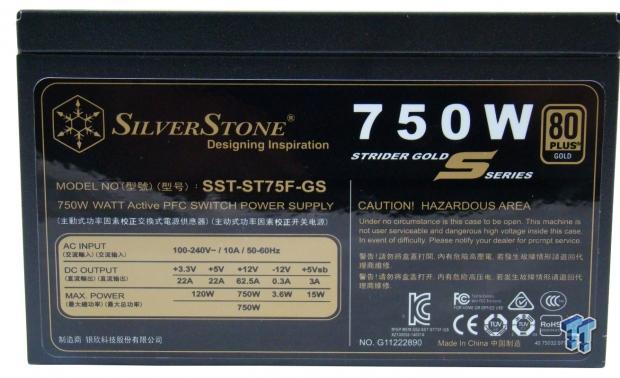
The I/O specification label can be found on this side of the unit. The other side is simply black without a logo.
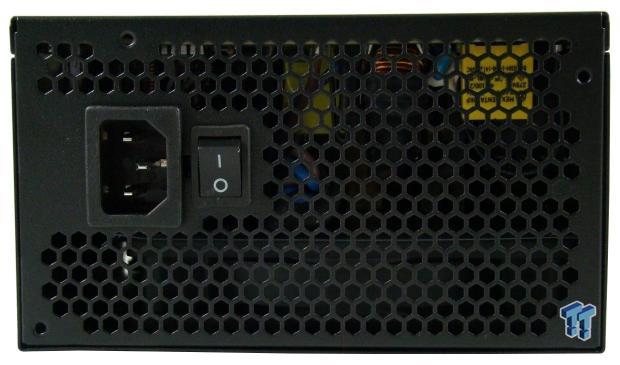
Standard honeycomb mesh can be found on the back of the unit to provide ventilation. Also present is the AC input and on/off rocker switch.
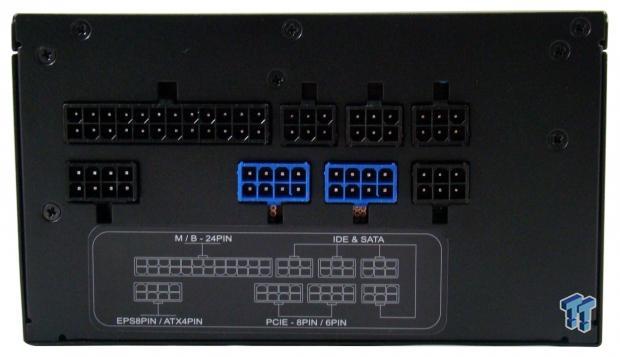
Spinning around to the front, we can see all of the modular connections. They are labelled via the label and you can quickly differentiate the PCI-E connectors as they are blue. The cables have matching blue ends so that there is no confusion with what goes where. Note there are two less here than with the V1 unit. This means there are either some cable changes to come or this unit will support less PCI-E connectors.
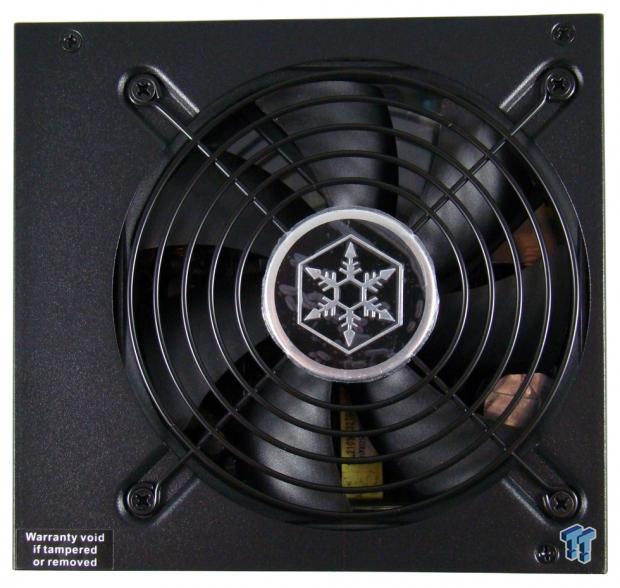
SilverStone keeps it simple with the fan and grill on the bottom of the unit. Aside from the SilverStone logo in the center, we find the standard wire grill that we've seen covering computer fans for the last twenty years.
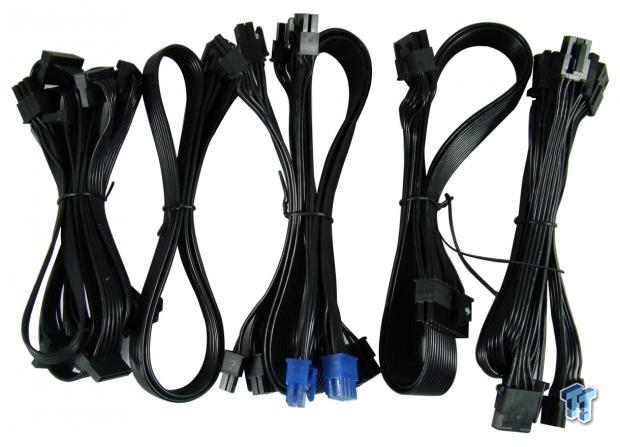
All cables for the ST75F-GS V2 are of the flat ribbon type and black in color.
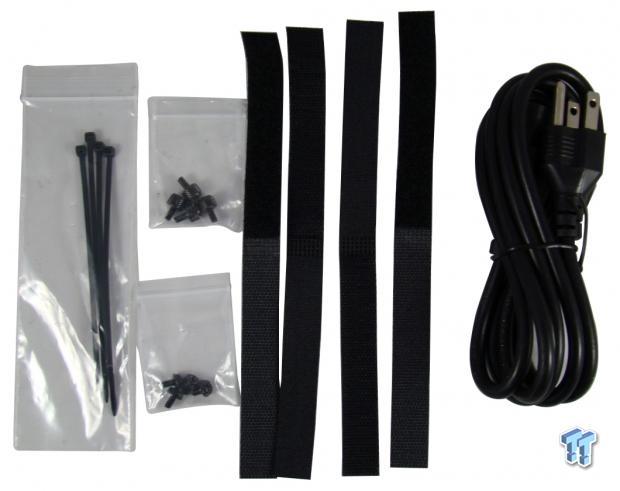
Also included with the ST75F-GS V2 are some zip ties, Velcro cables ties, AC input cord, standard mounting screws, and thumbscrews.

Finally, we have the user's manual and specification manual.
Cabling Arrangement, A Look Inside, & Old vs. New
Cabling Arrangement

Aside from the PCI-E cables, nothing has changed here. Previously there were four PCI-E cables, each with their own connector. Now there are a pair of cables, each with two. This seems to be a more likely scenario as to what this unit will be used for and the change is welcomed to help reduce the cable clutter.
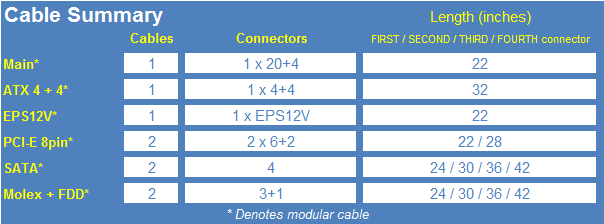
Rail distribution is as simple as it gets with a single 12V rail. There is no need to worry about load balancing here.
A Look Inside
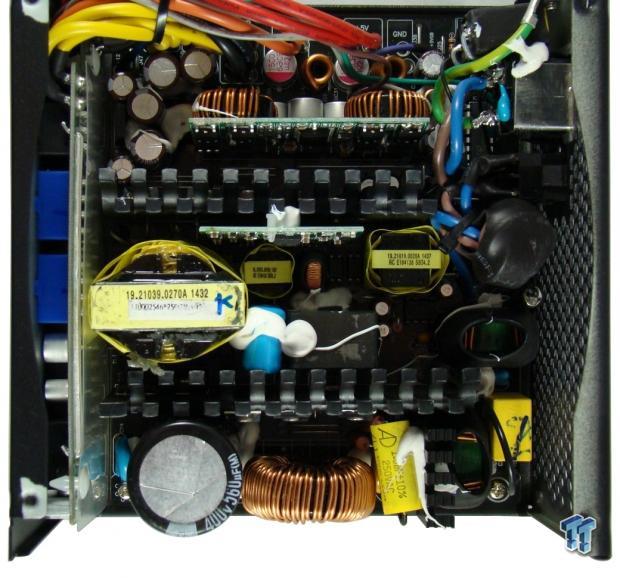
A quick look at the PCB and layout reveals a completely different design of the unit. This is because SilverStone switched from Enhance Electronics to High Power to manufacture the unit. The new ST75F-GS V2 has some extra passive cooling.
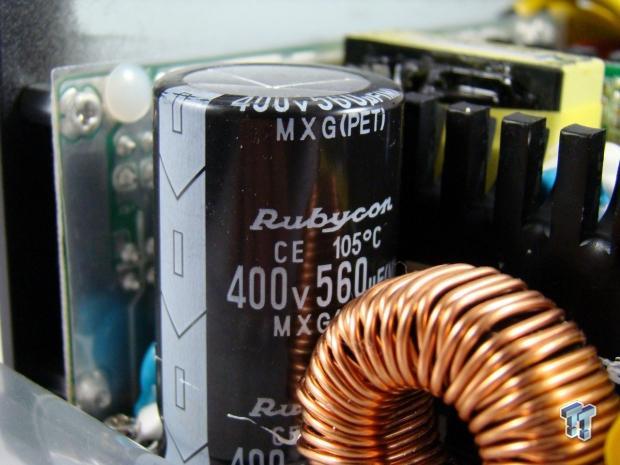
A single Rubycon capacitor can be found on the primary side of the ST75F-GS V2 compared to the dual caps on the previous version.
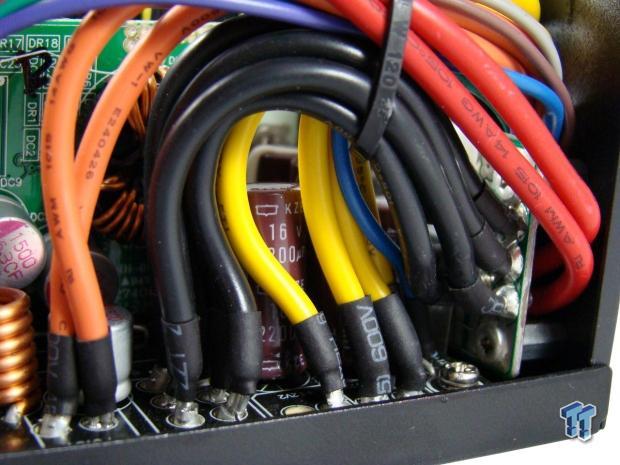
The secondary side seems much better than before as it is filled only with Nippon Chemi-Con caps.
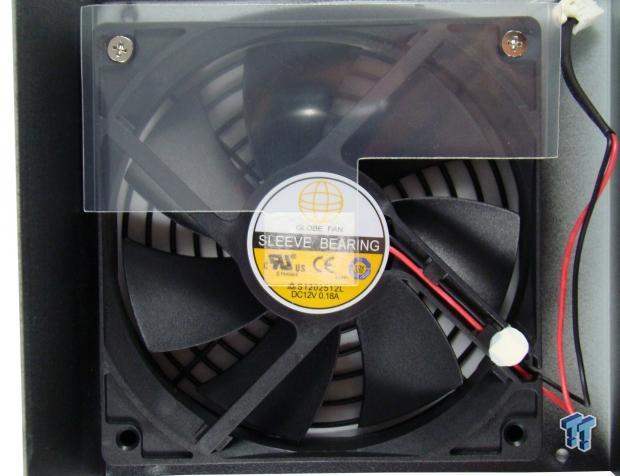
SilverStone uses the S1202512L 120mm fan to provide the active cooling for the ST75F-GS V2.
Old vs. New
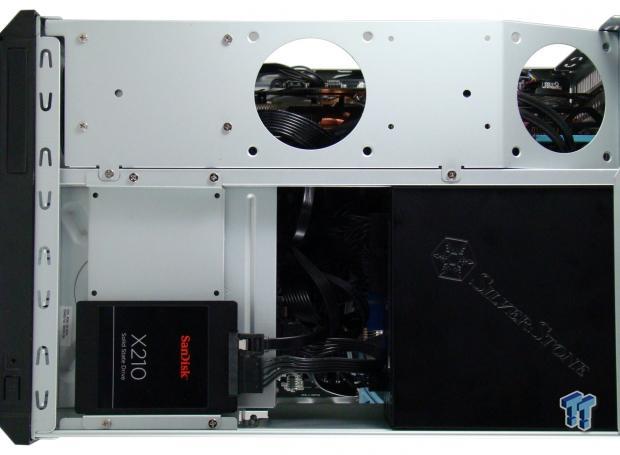
Just to give you an idea of the two units and the size difference, here they are side by side. The new V2 unit is on the left. It is about half an inch shorter.
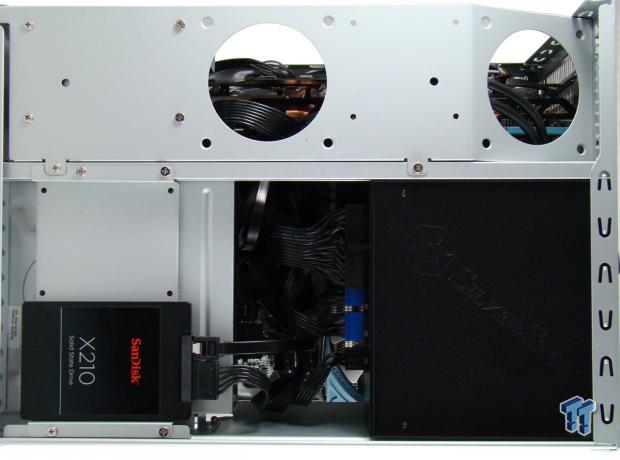
Here is the old ST75F-GS installed in the SilverStone SG11 case with a full system. It certainly was a pain trying to get everything plugged into the PSU and get it installed without causing issues with the CPU fan.
Here is the same system, but with the ST75F-GS V2 swapped in place, even utilizing the same cables. You can tell the difference by looking at the blue ring around the CPU cooler as there is more of it visible. The difference visually is small, but I can attest that the difference during installation is a major improvement. Just that little bit can save quite a bit of hassle when building a system, and it is a solid reminder as to why simple things like this are important.
Test System and Results
Our Testing Method and Test Results
Our load tests utilize a couple of FAST ATE active load testers, and a variety of other equipment such as an oscilloscope, power conditioner, temperature probe, and a power consumption meter. You can read more about our standard testing approach here.
The tests performed are based around six conceivable setups that are out there, and progressively load down the PSU up to the power supply's limits, or 1000W; whichever comes first. Since our test equipment's limits are lower than that of the SilverStone ST75F-GS V2 750W power supply, we can test it to its maximum.

The above tests represent typical loads that we have measured from various systems, and are meant to give a rough idea of where your computer might fall in line with our tests. Please keep in mind that each system is different, and actual loads can vary greatly, even with similar hardware.
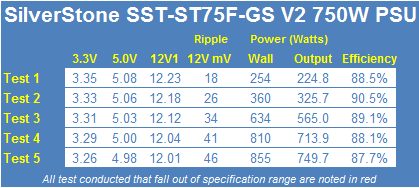
Let's start by taking a look at the voltages, to see how well this unit did during testing. Starting with the 12V rail, we see 2% regulation from start to finish, with a total drop of .22V. The 5V rail managed to stay within 2% of specification, with a total drop of .10V from start to finish. Moving towards the 3.3V rail, we see that regulation was within 2% of specification, with a total voltage drop of .09V.
DC Output quality for the SilverStone ST75F-GS V2 was good, and well within specifications. During Test One, we saw 18mV of noise on our scope at 22% load. When we increased the loads in Test Two, the ripple climbed to 26 mV at around 43% load. Increasing loads even further showed that the noise on the 12V rail climbed to 46mV at 750W.
The SilverStone ST75F-GS V2 is rated for 80 PLUS Gold efficiency. This means that the power supply must perform at 87% / 90% / 87% efficiency, at 20% / 50% / 100% loads respectively. As you can see, the SilverStone ST75F-GS V2 performed exactly as would be expected to reach these levels of efficiency.
Final Thoughts
Our first review of the SilverStone ST75F-GS was certainly one of mixed feelings. On one hand, the unit had decent features and performance, but on the other, it had a crappy warranty and the build quality wasn't all that great due to the capacitors on the secondary side of the unit. These factors combined with the price of an entry level unit left us with neither a recommendation for or against the unit.
The new ST75F-GS V2 does lack some output that the original unit did, but it is very minor and those in need of that extra bit of power are likely going to be searching for a higher-end unit anyway. Almost everything else for this unit is a step up from the original and that is just what we were hoping for. More passive cooling. Simpler cabling. Better performance. That's the name of the game when it comes to superseding previous models and on that note the ST75F-GS succeeds.
The only thing that we'd like to see change is a slightly lower price point or longer warranty. With others handing out seven and ten year warranties like candy, there's no reason a unit like this shouldn't bear a five-year warranty to nudge it along a little bit.

